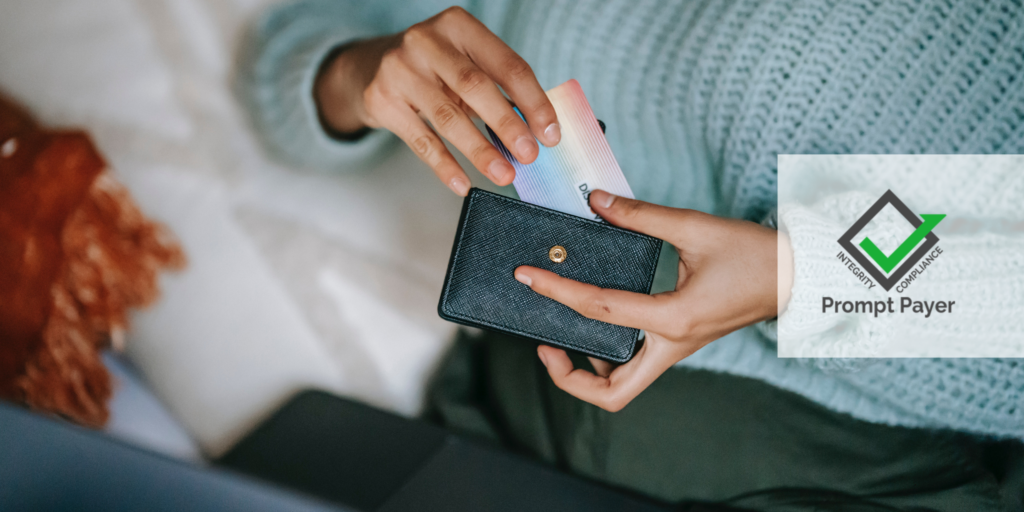
Invoices and debt collection
Prompt Payer is dedicated to delivering a service to their clients that offers them peace of mind and security for their business. If you are struggling to get paid on time our partners Prompt Payer can help through their ethical debt recovery services and have provided some advice on invoicing.
The cost-of-living crisis is causing late and non-payment of invoices to become more prevalent. One of the first things that Prompt Payer asks for, when taking a debt collection instruction, is a copy of the outstanding invoice. We are finding in over 30% of cases the invoices do not meet the legal requirements and 17% didn’t have bank details on!
A good invoice should include the following –
1. invoice
Identify the document with the word ‘invoice’ to differentiate from a quote, credit note or receipt.
2. a unique invoice number
The number must be unique to each invoice (without duplicates) for clear identification and you must keep a record of the numbers and references used
3. your company name and address. VAT number
This is different for sole traders and limited companies but essentially, you must clearly show your trading name, business address and also, where you can be contacted by the customer, in case of query or dispute. Include VAT number if applicable.
4. company name and address of the customer
This is standard procedure on all invoices but is important for customers who want to claim back any VAT that has been charged.
5. a description of the goods/services
A clear description of the goods and services being invoiced for, with each service or item on a separate line for clear identification.
6. the date of supply
Known as the ‘supply date’, this is when the goods or services were issued. The supply date may be different to the invoice date but is usually within 30 days.
7. the date of the invoice
Date of when the invoice was generated and not when the goods/services were supplied.
8. the amount of individual goods or services to be paid
If you have a list of items in the description, then each one will be marked with an individual amount.
9. the total amount payable
The sum total of all goods listed on the invoice.
10. payment terms
Usually defined in your terms and conditions and agreed by your customer.
These are your terms for the length of time to pay and should be marked at the bottom of the invoice. For example, payment within 30 days. Without this then payment terms default to 30 days.
11. purchase order number (for corporate customers)
If your customer provides you with a purchase order number, then this should be clearly shown on the invoice.
Some customers may also require that the name of the contact person is shown on the invoice.
Asking for a purchase order is recommended as once generated this is a legally binding contract between yourself and your client/customer.
12. retention of goods
Whilst not a legal requirement, advising that goods supplied are owned by you until the invoice is paid will give you leverage in the case of non-payment.
13. how to pay the invoice
List the different ways that an invoice can be paid include the bank account references. For example, your bank sort code and account number for BACS payments.
If you would like further information about Prompt Payer and the benefits available to you as a HETAS registrant, please email [email protected].



